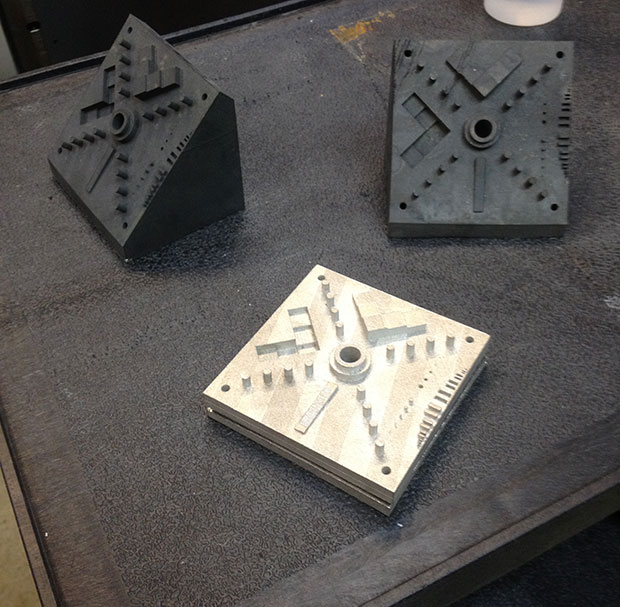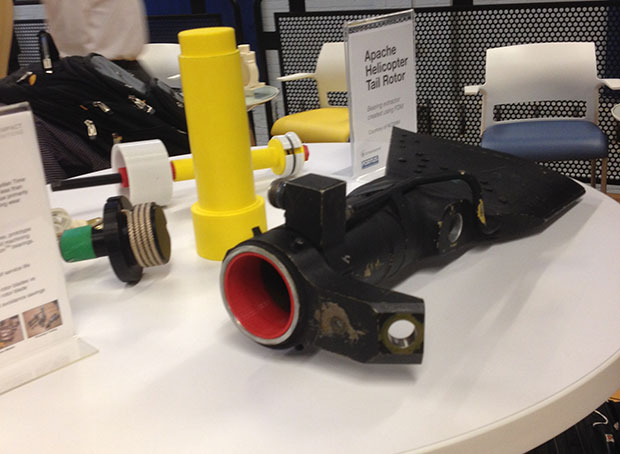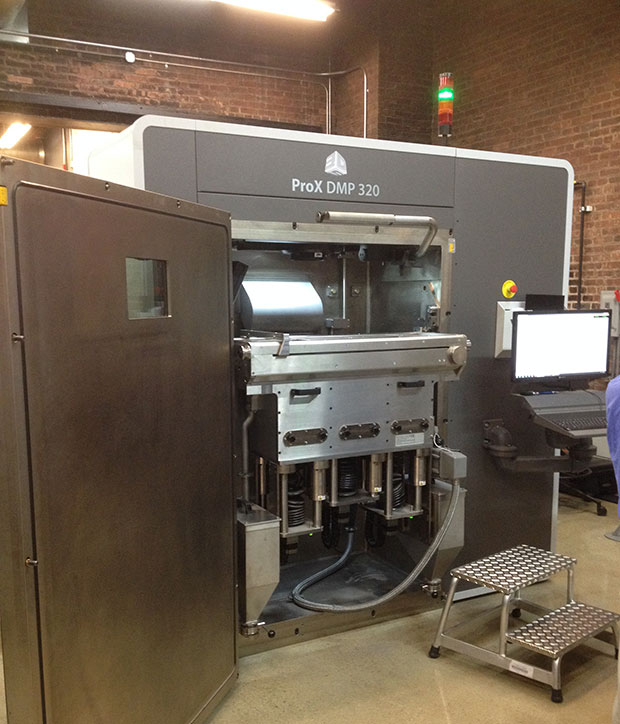AM Industry Faces Materials Challenges

Latest News
August 15, 2017
When it comes to creating production parts using additive manufacturing (AM) processes, the industry lacks the material data needed to ensure consistent results – and may need to take a whole new approach to understanding how materials work in a 3D print environment.
That was the message at “The Changing Landscape of Additive Manufacturing Materials,” part of the Smart Manufacturing seminar series produced by SME and America Makes. The conference took place in Youngstown, Ohio, on August 10.
The conference featured a strong lineup of speakers from academia, AM service and equipment providers, and case studies from early adopters like Northrop Grumman and GE.

Although the speakers were bullish on the promise of AM in manufacturing, material challenges were top of mind – both the limited number of available materials, and the inability to guarantee performance in identical parts.
Tracy Albers, president and CTO of RP+M, cut to the heart of the matter during her presentation on qualifying materials and process. To wit, she said that AM processes are still unreliable, not reproducible, and that material behavior is not well understood.
RP+M has been conducting validation testing on Ultem 9085 on Stratasys Fortus 900mc machines to evaluate process variability. Initial tests of tensile strength found 30 percent coefficient of variance on parts made on the exact same equipment. In some cases, this variance appeared to be the result of operator experience.

Based on findings from this research, Albers said that Stratasys recently redesigned the tip used in Fortus machines, which reduced the variance. “But if you have one of these machines on your production floor, and if you don’t have the new Fortus tip, you have 30 percent variability,” Albers said. “That’s not good.”
RP+M is developing the basis for what an additive manufacturing material database should look like. Standard material allowables based on existing processes aren’t reliable – the material goes through different processes that affect its performance not only before and after the AM process, but during it as well. No one fully understands how these processes ultimately affect the performance of the final part.
“The material allowable has to be tied to the process, and you can’t use injection molding allowables,” Albers said. “We are certainly in uncharted territory. There is so much work to be done that it’s a little overwhelming.”
Good News
There was plenty of good news at the conference, too. The ability to create multi-material builds is advancing rapidly, and it’s possible to print a far greater number of materials than was initially thought possible.
Eric Wetzel, team leader at the U.S. Army Research Laboratory, described a multi-material process for creating optical fiber, medical microtubing, and other structures by 3D-printing thermal drawing forms out of ABS and polycarbonate which could then be pulled down into very small structures while maintaining complex geometries. The team was also able to turn those structures into filament.
Christopher Williams, associate professor and J.R. Jones Faculty Fellow at Virginia Tech’s department of mechanical engineering, suggested that that new polymers should be designed specifically for use in AM systems. He also discussed research into printing with materials like high-performance polymers that traditionally have not been usable within these systems. That research has involved collaborating with chemists in the university’s polymer engineering group.
“AM is on the verge of an inflection point on polymer availability,” Williams said. “Materials must be redesigned for additive. Polymers can be tuned chemically for specific processes, but you have to understand the process-structure-property relationships.”
That means that design could include concurrently developing not just a structure, but also a material and a manufacturing process specific to that structure.
Williams also described how his team was able to print using polymide (Kapton), a material only available as a 2D film that was considered unprintable. They developed a process of printing a “wrapper” around the polymides to give it shape via mask projection stereolithography. “The mechanical properties are identical to the film version,” Williams said. And while the printed structures shrunk significantly after production, the shrinkage was near isotropic – which actually opened up the possibility of creating even smaller items with the same resolution.
However, that will require designers to start thinking differently about how materials are used. “We have to get designers to think about this,” Williams says. “They only think of Kapton as a film. They have no idea how to design for this process.”
Faster, Better
Getting AM-created parts to perform consistently is a huge challenge for adoption in manufacturing. At GE, it took five years for the company to achieve FAA certification of its LEAP fuel nozzle, which is now mass produced via AM. Initially, though, only 30 percent of the parts met the company’s specifications. “We’re in the infancy of metals in AM,” said Deb Whitis, materials leader at GE Additive. “There is a lot of variation among machines. How do we make one part, and make that part repeatedly so we can prove to the FAA that the material properties we’ve provided are true?”AM also needs a greater number of available materials to be viable. “My competitors are a forging house or a casting house,” Whitis said. “Think of the materials available to them. We need to drastically expand our capabilities.”
3D printing will have to be better and faster, said Kenneth Church, chairman and CEO of nScrypt. In addition, companies will need to be able to monitor the health of printed products as they are being produced. That will require the use of real-time sensors to alert operator to build flaws so that they can be addressed during the print process.
Software will also need advance rapidly. The presenters at the conference noted that AM manufacturing capabilities have exceeded the ability of current engineering software to design for or control the manufacture of the complex designs made possible by the technology. Larry Holmes, principal investigator at the at the U.S. Army Research Laboratory, described a machine at that facility that includes 12 printheads and 6-axis control. “There is no software in the world that send information to that printer and manage it,” Holmes said. “We need material-agnostic and process-agnostic software. We want to be able to take a CAD model with 70 different materials in it, send it to my machine and just make it go.”
AM initiatives will also require the involvement of more than just engineers or specialists. At Northrup Grumman, mechanical engineer Bianca Lankford said the company’s procurement department had no idea what filament was, or how to order it. “This is really part of the whole process. You have to integrate the procurement and supply chain teams, because this is brand new technology for them,” Lankford said.
Finally, several speakers emphasized that the future of AM will involve the ability to print multi-material structures using multiple processes – even processes that aren’t additive. These systems will combine additive, subtractive, and other processes to create a final product.
Brian Albright is a freelance journalist based in Columbus, OH. He is the former managing editor of Frontline Solutions magazine, and has been writing about technology topics since the mid-1990s. Send e-mail about this article to [email protected].
Subscribe to our FREE magazine, FREE email newsletters or both!
Latest News
About the Author
Brian Albright is the editorial director of Digital Engineering. Contact him at [email protected].
Follow DE





